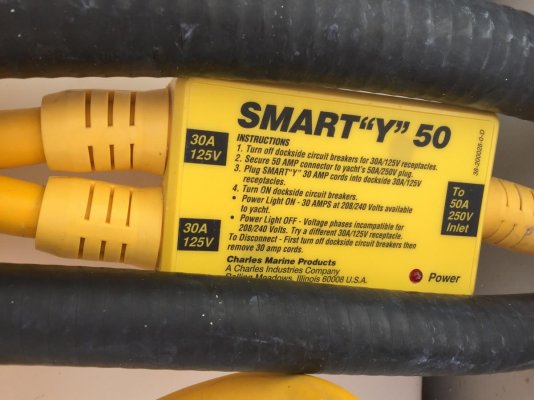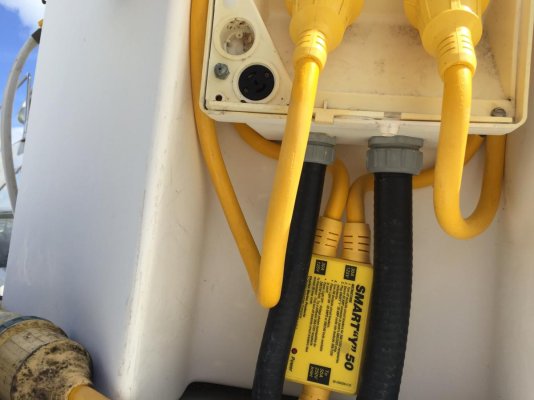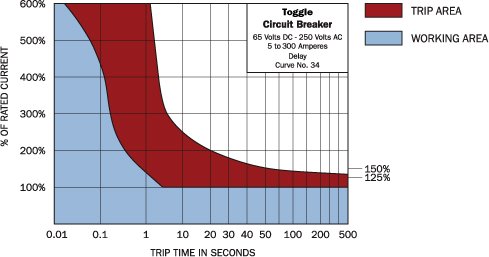psneeld
Guru
Unless I am reading something wrong with all the non-standard marina outlets.....that's how every 125/250 pedestal is that I know of....some marinas are screwed up and have every other pedestal wired for out of phase...but worrying about it changing without notice seems a bit over the top.I absolutely would not recommend trying to get 240 from this setup over any length of time. There's no guarantee that someone swapping a breaker or other wiring change won't put them back on the same leg
And you really aren't looking for 240, just 2 legs of 110 out of phase so your smart Y will work.
The boat only needs 110, but the Y assumes you might need 250.



